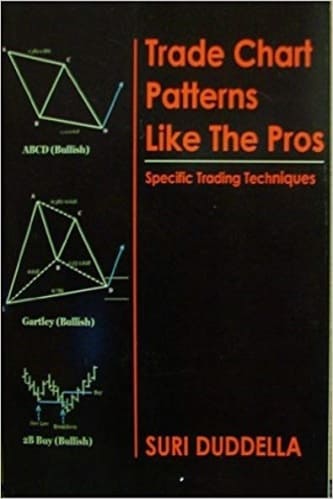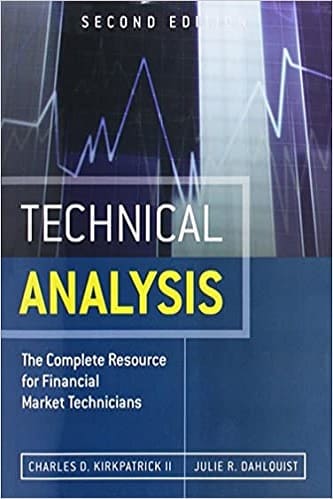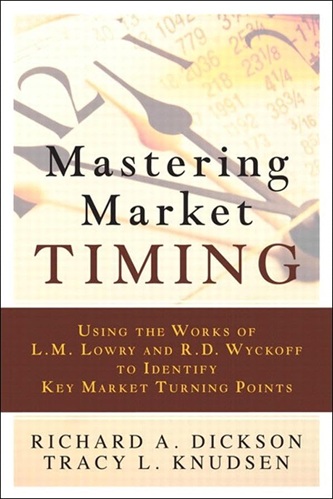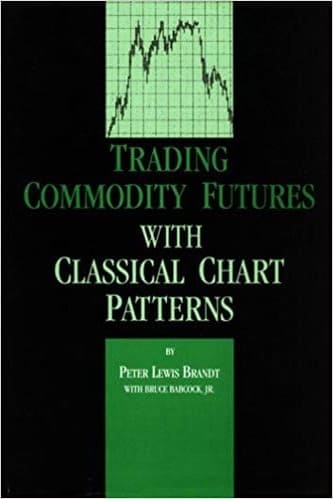Articles
Breakaway Gaps By Kenneth Gilliland
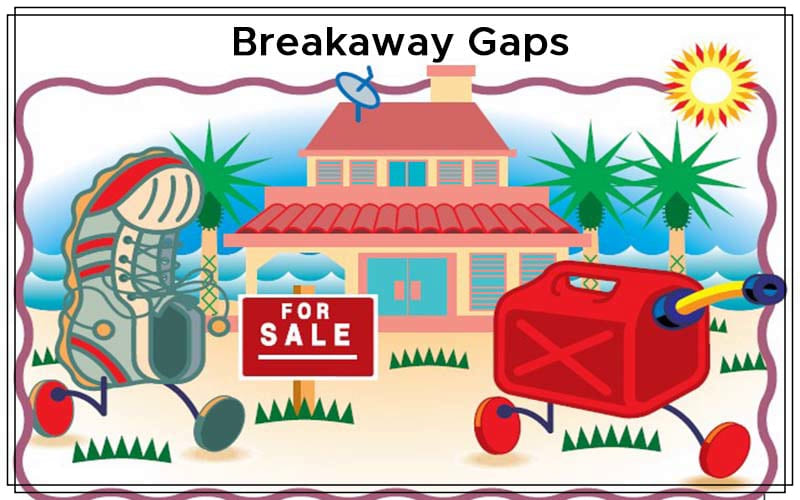
There are many different types of gaps, but this one provides the best risk–reward ratio. A gap up in a stock’s price is an exciting event. Usually, such moves will be covered by the financial media, creating hysteria and resulting in some people frantically buying the stock “before its too late.” Rarely do the pundits provide a reasoned and thorough explanation as to why the large jump in price will lead to any sort of substantial gains over the near future; they just report the aweinspiring numbers without touching on their technical significance. Sometimes, armed with simply a headline, the uninformed will buy the stock and get lucky. Over the long term, however, this strategy is bound to fail, as a large gap up in price does not necessarily mean the stock will continue to rise. It is possible to trade these large price moves and jump on a profit-making trend, provided you learn to recognize the patterns that are more likely to succeed.
There are various types of gaps including common, run-away, and exhaustion gaps. For our purposes, however, the one we will concern ourselves with is the breakaway. From a trading perspective, it provides the best risk–reward ratio when compared to other price gaps.
WHY BREAKAWAY GAPS OCCUR
Just like gasoline, beachfront property, shoes, or any other commodity, the price of a stock is affected by the forces of supply and demand. If demand is greater than supply, the price of an item will rise. Conversely, if supply is greater than demand, the price of the item will fall. If you are a trend-follower, you may be of the opinion that stock prices generally move up or down in a uniform fashion. However, if a situation has dramatically changed, it may cause the demand to rise or fall, resulting in a stock price gapping up (or down). Some examples of when a breakaway gap may form are an earnings surprise, award of a new government contract, or the possibility of a buyout. Will the stock continue to rise? We can never know for sure, but the charts give us some clues as to whether it might be worth entering a trade and riding the trend.
PRICE MOVES OUT OF TRADING RANGE
A breakout of a trading range is the main distinction that separates breakaway gaps from other types of price gaps (Figure 1). A quick look at a chart can tell you whether this has occurred. If a stock has been trading between $20 and $25 for three months and suddenly gaps up and moves out of that range, you may have a candidate for a breakaway gap. There is no set period of time, but the longer a stock remains in a trading range, the more significant the movement out of that range. Gaps that occur within a trading range are deemed common gaps. They are questionable and should not be traded, as the stock has yet to prove that it can move to the next level beyond the current range; those that occur at the end of a downtrend are also suspect. While this may forecast the possibility of a trend reversal, this is not the sort of price move we are discussing.
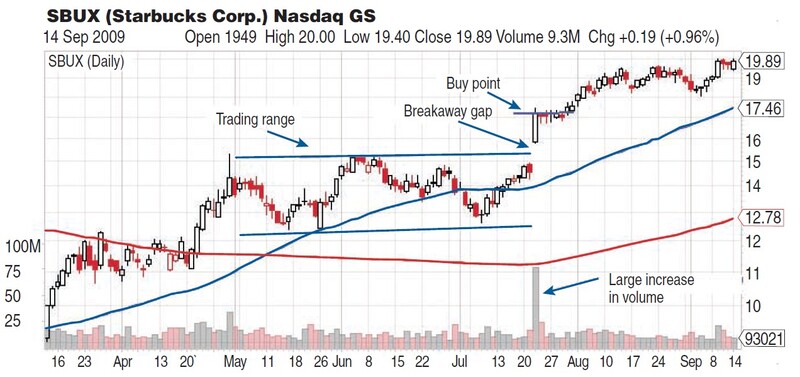
FIGURE 1: A CLASSIC BREAKAWAY GAP. After trading in a range for almost three months, the stock gaps up out of the trading range on tremendous volume. In this case, the stock did not provide much of an opportunity to buy before the next rise in price. While the stock did pull back, it did so on lighter volume and stayed near the closing high.
INCREASE IN VOLUME
As you may have heard countless times, “Volume confirms price.” This oft-used phrase also holds true for breakaway gaps. Ideally, volume should increase substantially above normal volume levels. A 10% to 20% increase in volume is not enough. You should be able to look at the volume on a chart and easily recognize that a huge increase in volume has occurred (Figure 2). A large spike in volume is a sign that the big institutional investors – usually known as “smart money” – have jumped on board the stock. This ensures that the stock price will be supported near the breakout level and the stock will continue to rise. Can a breakout succeed on light volume? Absolutely! More often than not, however, the light volume breakouts will fail, as there is no real conviction behind the move. As a trader, you must always consider the risk. Abandoning the move that is less likely to succeed is the prudent course of action.
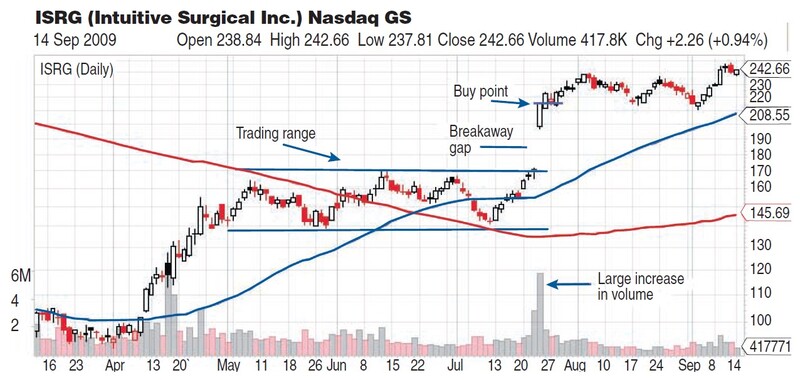
FIGURE 2: BREAKAWAY GAP WITH STRONG VOLUME. In this case, the price went sideways for a longer period of time, but ultimately the stock did continue its rise in price. In addition, there was more price volatility involved after the initial breakout but the stock did stay below the intraday low of the initial breakout.
PRICE ACTION THROUGHOUT THE DAY
Another factor to consider is the price action for the day as well as the closing price. Ideally, after breaking above the current trading range, the stock price will close near the high of the session. A breakaway gap that loses most or all of its gains may not be an ideal candidate. As a rule, I would steer clear of such breakouts, as they are more likely to fall back into the trading range (or worse).
Suggested Books and Courses About Chart Patterns
TRADING THE BREAKAWAY GAP
There are many different ways to trade the breakout. After the market closes on the first day of the breakout, place a stop order a few cents above the previous day’s closing price, or if you are less aggressive, the intraday high. Do not worry if the market does not continue its uptrend the day after the breakout; in fact, a continued rise the day after may signal that the stock is about to come crashing down. Ideally, some pullback in price on decreasing volume is more desirable, as the stock is taking a well-deserved break after such a quick rise.
RISK MANAGEMENT AND TAKING A PROFIT
Like every other chart pattern buy signal, the breakaway gap is not always going to lead to a profitable trade. Every trader has a different risk threshold. However, there are some suggestions about where to place a stop-loss. First, you can place it just below the opening or intraday low of the breakout. This area will normally act as support. Keep in mind that sometimes the price will undercut the intraday low, only to have some buyers enter the market and support the stock. Another possible way to employ a stop-loss is if the breakaway gap did not occur too far from the previous trading range. In that case, you can place a stop-loss below the top of the previous trading range.
Prior to entering the trade, you should consider the point at which you may wish to take a profit; scan for possible resistance points that may impede the upward movement of the stock price. Examples include moving averages (specifically, the 50- or 200-day moving average), or previous overhead trading ranges. However, if the breakout occurs at or near an all-time high, you may want to consider holding it for a longer period, possibly taking profits at various points along the way.
WHO DOESN’T WANT A PROFIT?
While you may have missed out on the first big move, trading the breakaway gap will ensure that if the stock’s price continues to rise, you will be there to garner profits. As always, remember that there is no sure thing in the stock market. No matter if a trade looks like a “can’t lose” situation, always employ stop-losses to manage risk.
Kenneth Gilliland is an attorney and long-time trader.

